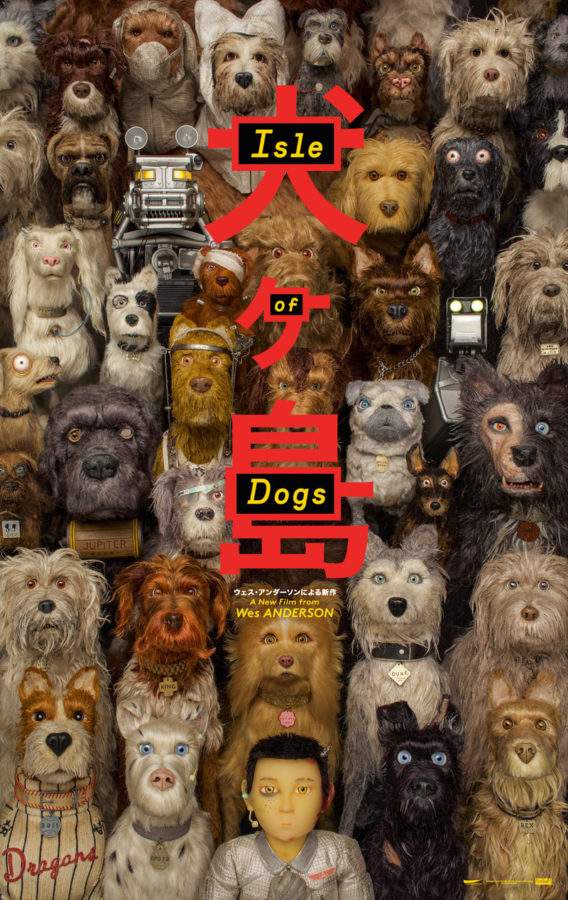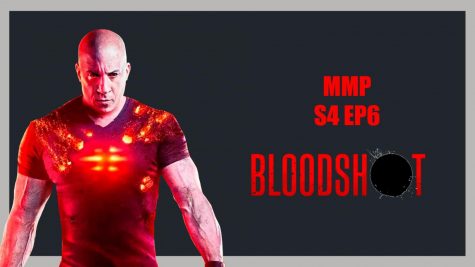Review: Isle of Dogs
Wes Anderson wasn’t a name I was familiar with until recently; although, I do remember seeing Fantastic Mr. Fox, another Wes Anderson stop-action film, in theaters close to 10 years ago. While I vaguely recalled the movie, the trailers for Isle of Dogs gave me hope that I would see a pretty decent movie that I might watch one or two more times in my life. And I cannot even begin to describe how wrong I was.
To the contrary of what you might be thinking, I instantly fell in love with the movie and had to restrain from checking Fandango for when I could see it again. The movie begins with a quick exposition of the history of the fictional city of Megasaki, Japan, that leads up to 20 years in the future. Dog flu has become rampant among the oversized dog population in the city and in an executive order, Kobayashi (the voice of Kunichi Nomura), Megasaki City Mayor and dog-hater, declares that all dogs will be relocated to the man-made Trash Island. The audience follows the determined 12-year old Atari Kobayashi (the voice of Koyu Rankin) as he searches for his beloved dog, Spots (the voice of Liev Schreiber).
I’ll admit it, Isle of Dogs brought me close to tears about eight times, which is a new record. Admittedly, I am a dog lover, but I never felt exploited as one. Instead, the movie gave me time to actually care about the characters and the ongoing conflict. For example, Atari is a boy surrounded by loss. First he lost his parents in a tragic incident; then he lost Spots. Unlike most weepy characters in the same situation, Atari takes control and actively goes after Spots.
I noticed during the opening sequence how incredible the smoothness of the stop-action animation was, something that blows me away in a modern age of movies depending largely on CGI and special effects to create its settings. Not only does Isle of Dogs flaunt its unique style, but it also blends in a perfect soundtrack that more strongly develops each setting that the characters visit.
As for the design of each individual set, Anderson makes the difference between Trash Island and Megasaki City abundantly obvious. Megasaki is stuffed with tall buildings and railways; whereas, Trash Island is dreary yet very realistic.
Humor is another one of this movie’s strong points at the cost of a few characters being devoted almost purely to comic relief. However, considering that certain segments in Isle of Dogs can become quite depressing, the dry cut humor never failed to make me laugh.
Leaving the theater, I felt great. With an amazing combination of distinct animation style, a fantastic cast and a strong sense of humor, I cannot wait to see Isle of Dogs again in the near future.
Your donation will support the student journalists of Marquette High School. Your contribution will allow us to purchase equipment and cover our annual website hosting costs. You may become a PATRON by making a donation at one of these levels: White/$30, Green/$50, Blue/$100. Patron names will be published in the print newsmagazine, on the website and once per quarter on our social media accounts.

Will Roach, senior, has been the Opinions editor for the Messenger since 2018. Will is also the president of Movie Appreciation Club and a member of the...








